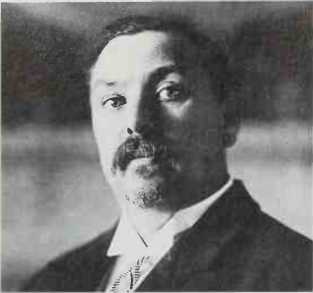Conversion full use from April 1941; US counterparts A-20, P-70, latter used in Pacific 1943-44. Production all variants 7,478 (of which 3,600 to Russia). Two l,600hp Wright R-2600-11 engines; max. speed 350mph (560kph); 2,6001b (1,180kg) bombs, up to 12 machine guns or four 20mm cannon.

Botha: South African Premier
Botha, Commandant-General Louis (1862-1919). South African. Botha joined the Transvaal forces as a junior officer in October 1899. Within two months, as Assistant-General, he had defeated Buller at Colenso and was effectively in command at Ladysmith, where he repulsed relief attempts at Spion Kop and Vaal Kranz. In March 1900 he succeeded Pietrus Joubert as Commandant-General. With instinctive military aptitude, Botha had the charm and strength of personality that enabled him to impose some unity on the independently-minded Boers. Late in 1900, he initiated a guerrilla campaign that tied down vastly superior numbers of British troops for many months. His aim was not the impossible one of victory and independence, but to gain peace terms that would enable the Boers to preserve their way of life.
Botha was the first Prime Minister of the Union of South Africa in 1910-19. In 1914-15, he showed both firmness and magnanimity in suppressing the pro-German insurgency headed by De Wet, Beyers and Maritz; that his military skills extended to modern motorized warfare was shown also in his defeat of German forces in Southwest Africa in March-July 1915.7?OW.
Bottomley, Air Chief Marshal Sir Norman (1891-1970). Br. Senior Air Staff Officer, Bomber Command 1938-40, Deputy or Assistant Chief of the Air Staff 194145. A key staff officer concerned before the war with the operational appreciation of the Western Air Plans for Bomber Command and, from 1941, with the formulation of air policies and drafting of directives to the Aoc-in-c.
Bougainville campaign (194344). The capture of Bougainville, the largest of the Solomon Islands, was a vital part of Operation “Cartwheel”, the Allied plan to break the Japanese hold on the Bismarck and Solomon seas. The assault on Bougainville was to be carried out by Lt Gen Vandegrift’s I Marine Amphibious Corps. At 0722 hours on November 1 1943, elements of the 3rd Marine Division landed at Cape Torokina on the west coast of the island. Light Japanese defences were quickly subdued and efficient air and sea cover protected the beachhead and invasion fieet from strong counterattacks. A small Japanese force managed to land on the left flank of the bridgehead, but was destroyed on November 8. Slowly the Marines, supported by the 37th Infantry Division, pushed into the interior and at the end of the month they fought a fiercely contested engagement at Piva Forks
, where more than 1,200 Japanese were killed. The drive inland enabled the construction of the allimportant air strips and, by early January 1944, three had been completed. However, Japanese resistance on the island had still not been broken and a major counterattack was launched against the bridgehead throughout most of March 1944. Its failure led to a withdrawal but, although American forces were now effectively in control of Bougainville, small pockets of enemy resistance were maintained until the end of the war. MS.
Bouncing bomb. Designed by Barnes Wallis to attack dams from low level (to avoid breakage on impact) and spinning (to aid the bounce) on water above the dam. It bounced until it reached the dam and sank to the bottom of the lake where it detonated. Thus it shook the foundations of the dam and fractured the wall. The weight of water above the dam then exploited the fracture. To achieve success and avoid self-destruction, extreme accuracy of aim was essential. The bomb was used only in the Dams raid. ANF.
Boxer Rising (1899-1901). In China, 1899-1900, the Society of Righteous Harmonious Fists (“Boxers”), tacitly encouraged by the autocratic Empress-Dowager Tz’u Hsi (1834-1908), began to murder foreign missionaries and their converts and attack Western commercial interests, whose rapacity had long been resented. On June 3 1900, as the Boxers converged on Peking (Beijing), 485 naval troops were sent from Western and Japanese warships at Tientsin (Tianjin) to protect the foreign legations.
On June 10, a 2,100-strong international relief force under British Adm Sir Edward Seymour entrained for Peking, but the Boxers sabotaged the railway and drove Seymour back with c300 casualties. On June 15, the landing of further Allied troops at Tientsin was threatened by the batteries of the Taku Forts. In a six-hour night battle on June 17, landing parties (900 men; 172 casualties) from British, French, German, Italian and Russian warships successfully stormed the forts.
In Peking, from July 20, Chinese Imperial troops stood aside as the Boxers conducted a sporadic 55-day siege of the British Legation (where 475 civilians, 450 troops and c3,000 Chinese Christians took refuge) and the P’ei Tang Cathedral Compound (40 French and Italian Marines guarding priests, nuns and c3,400 Chinese). Casualties totalled 60 military dead and 145 wounded; 16 civilians killed and 23 wounded; c450 Chinese Christians killed.




 World History
World History









